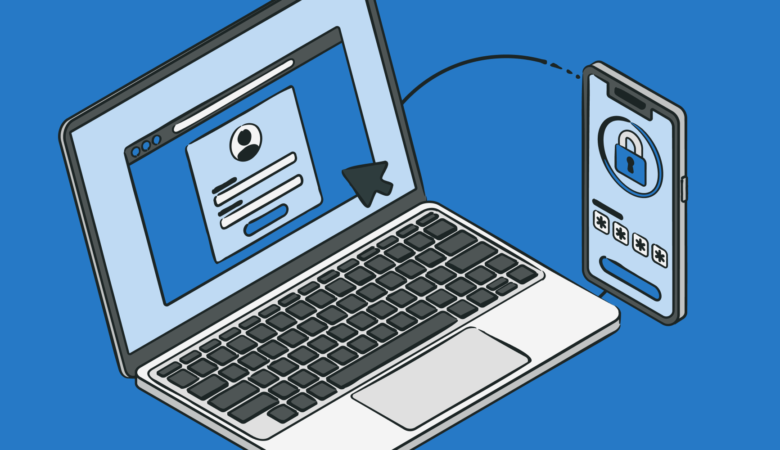For IT managers, the workload only seems to keep piling up. That trend was glaringly evident, according to 86% of respondents to a recent IT industry survey who said their workloads have increased post-pandemic. Just because workloads are increasing doesn’t mean they have fall into the lap of one or two individuals if you’re using monitor permissions to your advantage.
By delegating administrative tasks via custom monitor permissions, you’re in a better position to share the workload, eliminate bottlenecks, and reduce response time to outages or other productivity blockers.
With that in mind, Uptrends late last year made working with monitor permissions easier by adding the option to assign a default monitoring group. A monitor permission is a rule that applies to a specific monitor or monitor group, which dictates the level of access that a specific operator or operator group has over those monitors.
Now, operators who are members of the Administrators operator group have the ability to view and edit monitor settings, and create or delete monitors. Basic operators, by contrast, have the ability to view monitor data — dashboards, statistics, check results — but they cannot edit or delete any existing monitors, or create any new ones.
The new monitor permissions system permits administrators for Enterprise-level accounts to have access to more fine-grained controls that can be granted to individual operators to perform certain actions for specific monitor groups. One of the benefits of this kind of fine-tuning of controls is that you can custom distribute workflows to better accommodate operational requirements, which in turn, leads to greater productivity.
What’s more, you can also assign monitor permissions on individual monitors or monitor groups, and determine which operators:
– Can view data only
– Can view and/or edit monitor settings
– Can create or delete monitors within a monitor group
Permission types
Let’s talk about permission settings for a bit. There are a number of different permission settings that you can assign within groups that allow for maximum flexibility regarding improving the workflows of your teams.
One thing to take note of is that these new monitor permissions are currently available only to enterprise account holders. Another thing to note is that these permissions are cumulative, meaning each new permission level retains all permissions before it.
For example, an operator within the View monitor settings in group can automatically also view the monitor data. These permission types are available for you to select:
– View monitor data (in group): Operators that have this permission will only be able to view monitor data for the monitor (group) it applies to. Monitor data covers dashboards, statistics, and check results. It does not include monitor settings.
– View monitor settings (in group): This permission covers monitor data, but also includes monitor settings. Operators with this permission will be able to view monitor settings for the monitor (group) it applies to, such as monitor interval, mode, checkpoint selection, maintenance periods, etc. Keep in mind that with this permission, these settings will be read only, and may not be edited.
– Edit monitor settings (in group): Allows operators with this permission to make changes to the individual monitor or monitors contained in the monitor group this permission is set on. Operators with this permission will be able to disable or enable the monitor, change the interval, edit the checkpoint selection, add maintenance periods, etc.
– Create and delete monitors in group: As the highest permission that can be assigned, this effectively gives an operator administrative privileges for specific monitor groups. They will be able to create new monitors (albeit only as members of their assigned monitor group) or delete existing monitors. This permission is only available for monitor groups and cannot be assigned for individual monitors.

Take a look at the image above which we’ll call Example monitor group. Notice that the Everyone operator group in the middle can view monitor data only — meaning dashboards, statistics, and individual check results.
Now take a look at operator group Example operator group, which allows the user to view monitor data, and edit settings for existing monitors within this group. Further, the Administrators group has full create-read-update-delete (CRUD) permissions for the monitors contained in the Example monitor group. You can learn more about permissions here.
Setting up monitor permissions
Setting up custom monitor permissions is relatively easy to do. You can set them up as monitor groups or individual monitors as follows:
- Navigate to the monitor group or monitor for which you wish to set up a permissions.
- Open the Permissions tab for an overview of permissions currently set for that group or monitor. The Administrators operator group will always have the Create and delete monitors in group permission, which cannot be removed. By default, the Everyone operator group will have the View monitor data in group permission.
- To remove an existing permission, click the appropriate button on the right-hand side. Then, proceed to step 7.
- To create a new permission, click Add permission in the top right corner. To edit an existing permission, click the Edit button next to it.
- Select the permission you wish to assign. An overview of available permission types will be given below. If creating a new permission, select the individual operator or operator group you wish to give the permission to.
- Click Add or Update, depending on whether you’re adding a new or updating an existing permission.
- Don’t forget to click Save in the bottom left of the screen!
Takeaway
Assigning and delegating monitor permissions is easy and can benefit you by enabling better productivity across your teams. You can find the default monitor group setting in your Account settings (located under Account setup in the sidebar menu – but remember that this option is currently only available for Enterprise-level accounts.
Learn more about monitor permissions and Uptrends in general. We’re always happy to have a conversation about how Uptrend’s monitoring can benefit your organization.




